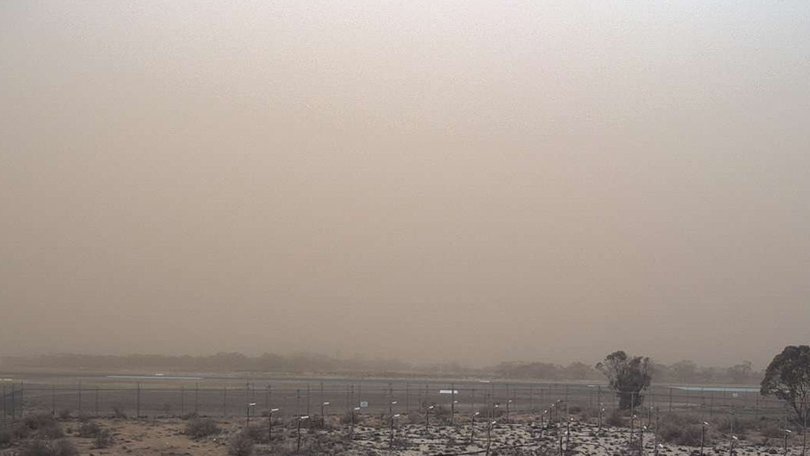Sydney air quality: Dust storm sparks urgent health warning, NSW residents told to ‘stay indoors’

A dense cloud of dangerous particles has swallowed the entire greater Sydney area, with health authorities telling locals to ‘stay indoors’ and ‘actively monitor for symptoms’.
The usually picturesque harbour, city skyline and the stunning Blue Mountains are not viable from a distance in Sydney on Tuesday as a dense dust storms sweeps through.
The NSW Government measures air quality by PM10.
Sign up to The Nightly's newsletters.
Get the first look at the digital newspaper, curated daily stories and breaking headlines delivered to your inbox.
By continuing you agree to our Terms and Privacy Policy.“PM10 are particles in air with a diameter of 10 micrometres or less,” it explains online.
“PM itself is short for ‘particulate matter’, another term for particles.
“PM10 is reported in unit of microgram per cubic meter (µg/m3).
These particles can pass into the lungs. Short term impacts include difficulty in breathing and worsening of asthma or chronic bronchitis symptoms. They can also cause irritation of eyes, nose and throat.”
Between 8am and 9am on Tuesday, some areas of Sydney had readings over 600μg/m3, with the highest registered in Prospect with 693.3μg/m3.
For comparison, in Delhi, India, a region that often has the worst air pollution in the world, currently has a result of 107µg/m3.

At one point, an area in the Illawarra region registered 903.2μg/m3.
Authorities are urging some Sydneysiders to stay indoors and avoid exercise.
What is causing Sydney air quality issues?
The NSW Rural Fire Service warned that severe drought in other states was blowing dust and particles into the state.
“Dust and airborne particles, caused by severe drought in other states are currently being blown across south-east Australia by intense storms,” it said in a statement.
“A dust storm originating in South Australia has moved into NSW overnight, significantly impacting air quality in several regions including the Greater Sydney area.
“Those with asthma or other respiratory issues are advised to minimise their exposure to the dust particles by avoiding outdoor activity, stay inside with your windows closed and cover your nose and mouth with a damp cloth.”
As on 8am on Tuesday, some areas of Sydney were registering “extremely poor” air quality results.
Air quality ratings explained
NSW Health breaks air quality into five categories: good, fair, poor, very poor and extremely poor.
In “good” conditions, there is no change recommended to daily life.
When conditions are fair, health authorities recommend reducing outdoor physical activity if you start coughing or have shortness of breath.
Under “poor” result, people within the area encouraged to avoid outdoor psychical activity and closing windows and doors.
When “very poor” quality is registered, locals are encouraged to stay indoors. If residents feel the air in their home is uncomfortable, NSW Health says to consider moving to a shopping centre, library, or an area with better conditions if it is safe to do so.
If “extremely poor” quality is registered, locals are told to stay inside, move to a safer location, watch for respiratory systems and call for help in an emergency.
Who to call if concerned about symptoms from air quality issues
NSW Health says “If you are concerned about symptoms call the 24-hour HealthDirect helpline on 1800 022 222 or see your doctor.”
“In a health emergency, call triple zero (000) for an ambulance.”
